
How would you describe what you are doing?
This is called graphic recording. It’s about taking large format visual notes during a conference, workshops, lectures. The goal is to grasp the essence of what has been said, choosing what is most important and transferring it onto a large format drawing and texts, so that the audience can better remember the message and can relate to it. Plus, it is also an attraction!
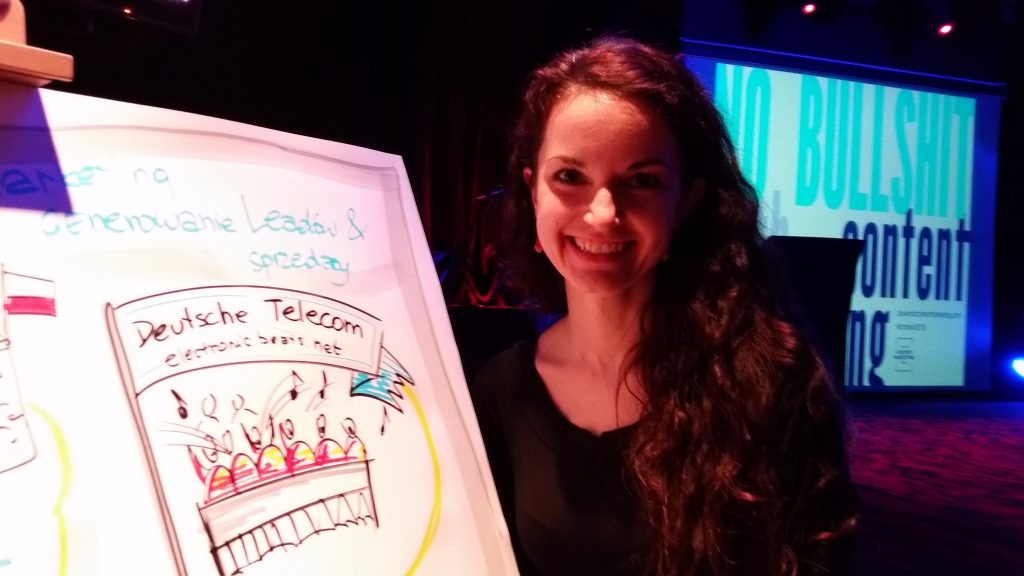
For many guests at the conference it was a fascinating novelty. Is the demand for this kind of service growing?
We can now see a boom in Poland, in in the west graphic recording has been functioning for 20 years. It is still a novelty here, so there is plenty of work and more and more people will be taking it up, and that’s good!
How long have you been doing it?
I’ve been working as a graphic recorder for a yes, but I’ve been dealing with essential drawing as such for four years.
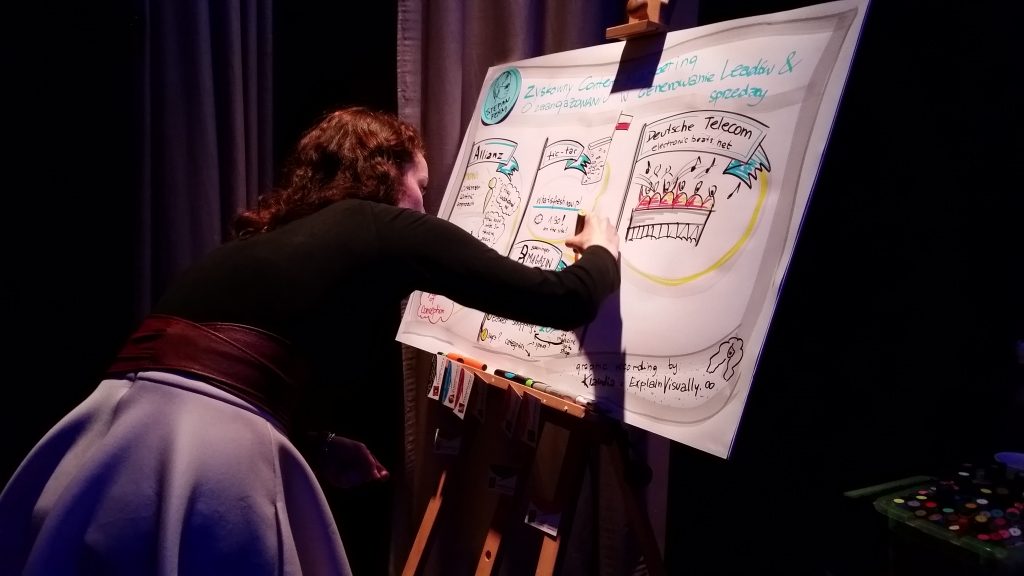
Is artistic education necessary?
Absolutely not! I am not a fine art school graduate, and I think this could be even impeding. The academy teaches you to use the details, and my drawing is about finding what’s important.
I am looking at your tools and I can see many different marker pens in all possible colors…
Yes, all the colors of the rainbow! But you can also see I am not using them all at once. The fewer colors the greatest readability, and the easier it is for the user to navigate, just like on websites. Colors add emotions, but I use it primarily for keeping order and drawing a path for the viewer through the drawing, so that they can follow the speaker’s story.
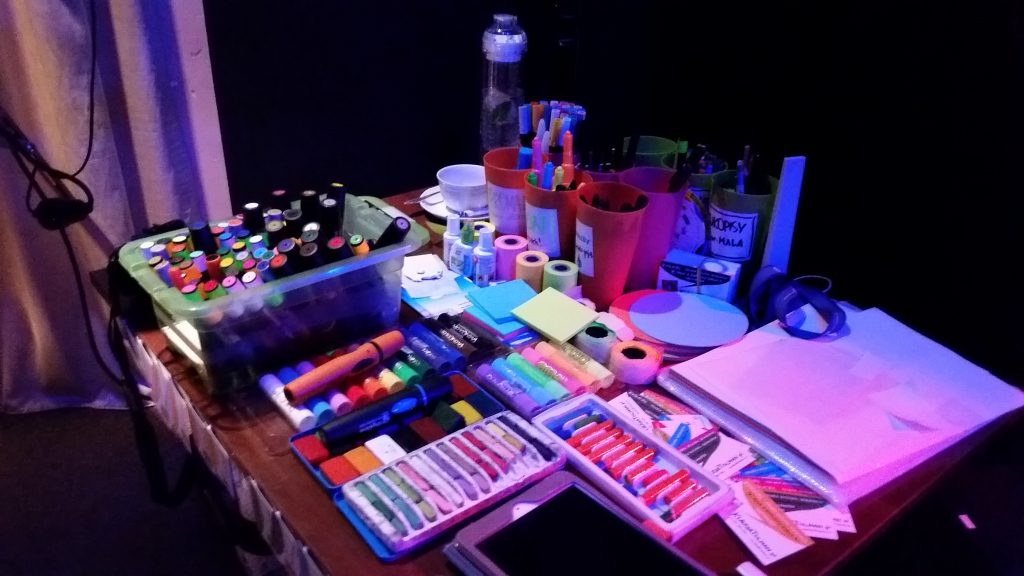
What’s most important at this work? Surely, you must be focused on the speaker’s words, but also on drawing…
I mostly focus on what the speaker says and shows. Mostly on words, because slides often contain too many things and I am not able to follow them all, so I treat the words as the essence of the speech, I extract the very essence of what is said and put it down on paper.
Do you need to prepare for that? Do you know the presentations in advance?
No, everything is live!
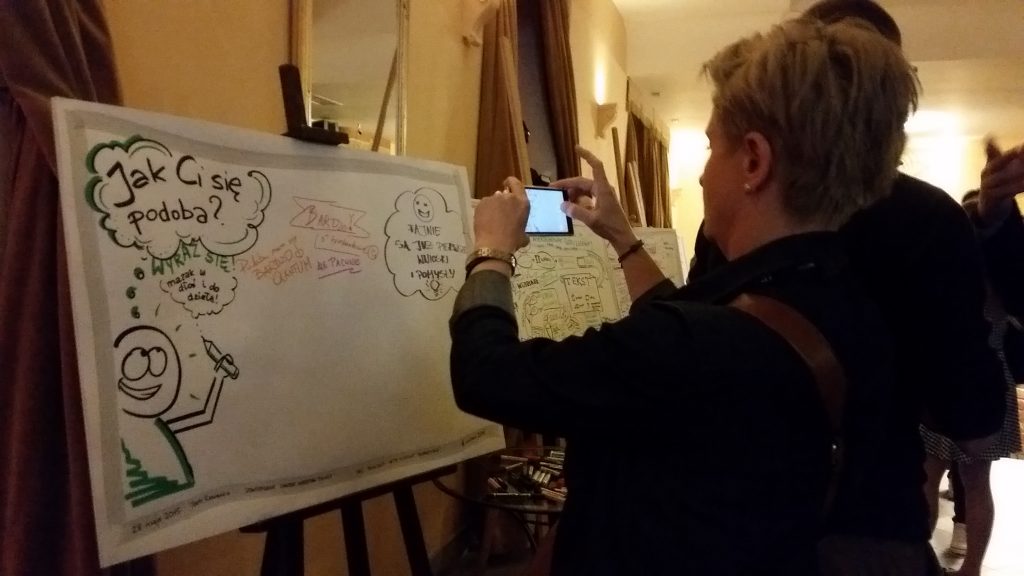
Is this your main job at the moment?
At the moment I mostly do animated films, animations for companies from various sectors. I draw on real paper, but contrary to live drawing, it requires much preparations: I think of the script, I make the storyboard, and then I get to drawing each still. In the end we edit the material, add sound effects… This is similar to the popular animation about Coca-Cola strategy, but the technology is different – in Explain Visually we are specialized in drawing on paper. This allows us to put real objects on the set, for instance when making a film for a beer producer, I can use hop cones, malt granules and show how beer is made. The use of real objects has a great advantage: a person watching such a film uses more senses and can imagine the flavor, remembers and understands better.
I also teach drawing, or thinking with symbols, cause it’s more about thinking and not just drawing. But you can also do this by yourself during a meeting, e.g. you can have a coach to note down or a facilitator at your side. Or the coach can take on the role of a facilitator to assist the group without directing them, and the outcome depends on people.
Are your drawings always witty?
They need to be – they will be remembered through associations. For instance, Paweł Tkaczyk used many jokes and stories, so I wanted to keep the atmosphere of his presentation. Someone who attended the conference will immediately remember the speech after just one glance at the board – they can remember more and use more.
There is also much writing in it, do you pay attention to the lettering?
You could think of your own writing styles, but I’m not that sophisticated. I focus on readability and grabing the essence, and not the “wow” effect, which by the way is also there, because people are impressed. The relation between the text and the drawings depends on the speaker and the content. If the message is mostly visual, based on a visual presentation, this is where I draw inspiration from, like the cat and cents in Tkaczyk’s speech, or idioms, which are very expressive and I can draw them literally to make them better remembered.
Do you get nervous?
Right in the beginning, when I wonder how to start. Then it just flows… until the moment when the speaker talks very rapidly and my board is about to finish! At that point I make it even more “essential”, put some additional information. Sometimes I go back to drawings and add some final touches.
What can be done with your drawing?
If graphic recording follows a workshop where a company team develops a strategy, ideas for product improvements, how to change the organization, such drawings can be the outcome of their e.g. 8-hour meeting. If we didn’t make them, their great plans might be gone for ever. But when we put it down and scan it, the tasks can be handed out and subdivided. Drawings are great for putting everything in order and keeping to the chosen ideas or searching for new solutions – something might come up after the workshop, and the board becomes a starting point for further work.
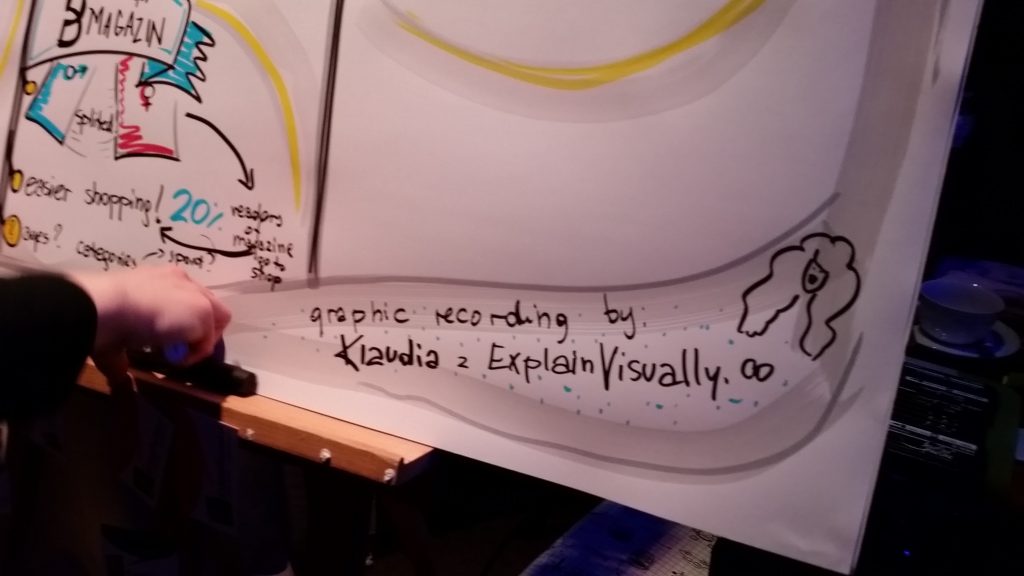
Kategorie: school of contentic, B2E, B2C, B2B